 Approved by Dr. Dwight Alleyne, DVM
Approved by Dr. Dwight Alleyne, DVM How To Whip Up (And Use) A Dog First Aid Kit
Whether it's from running into a wild animal or eating something they shouldn't have, there's no end to the trouble our buddies can get themselves into outdoors. So here's how a dog first aid kit can come in handy - and what to include in it.
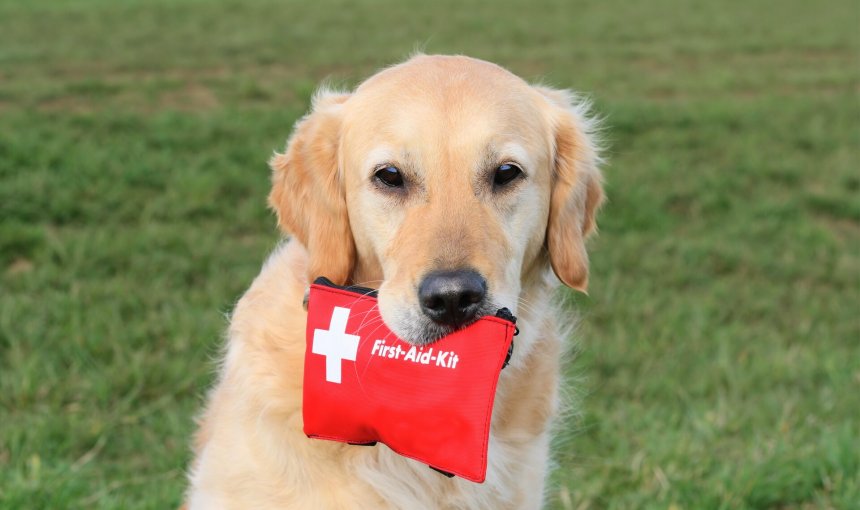
Ever planned a hike, camp, run, or just a trip outdoors…only to find it cut short because you’ve now got an injured dog to take care of? Makes a dog first aid kit a vital part of your inventory before heading off.
Because unless you’re monitoring your buddy every passing second (and missing out on the sights and sounds around you), it only takes a few seconds of negligence for your dog to bolt off into the distance, too far away from safety.
So in this post, we’re going to cover some of the basics of dog first aid, including what you should include in a kit. (And most importantly, how you can prevent your dog from getting injured by monitoring their movements – without ruining your own experience.)

Always know your buddy is healthy & safe
Read moreWhy it makes sense to plan ahead for a (mis)adventure
With all the adventures (and misadventures) they get up to, it’s like you’ve just blinked – and boom, you’ve got a dog that’s:
- Picked a fight with a moose (or worse, a badger, Mama bear, or porcupine)
- Run over a beehive and gotten badly stung
- Gotten a limb stuck in a trap or thicket
- Swallowed too much water from diving into a pond
- Rolled around in a flea-riddled shrub or patch of greenery (and now wants cuddles)
- Has run around too much in the heat – and now has heat stroke
- Eaten something they really shouldn’t have (like mushrooms or some other poisonous plant)
…and an endless list of mishaps that could occur when you’re both adventuring outdoors.
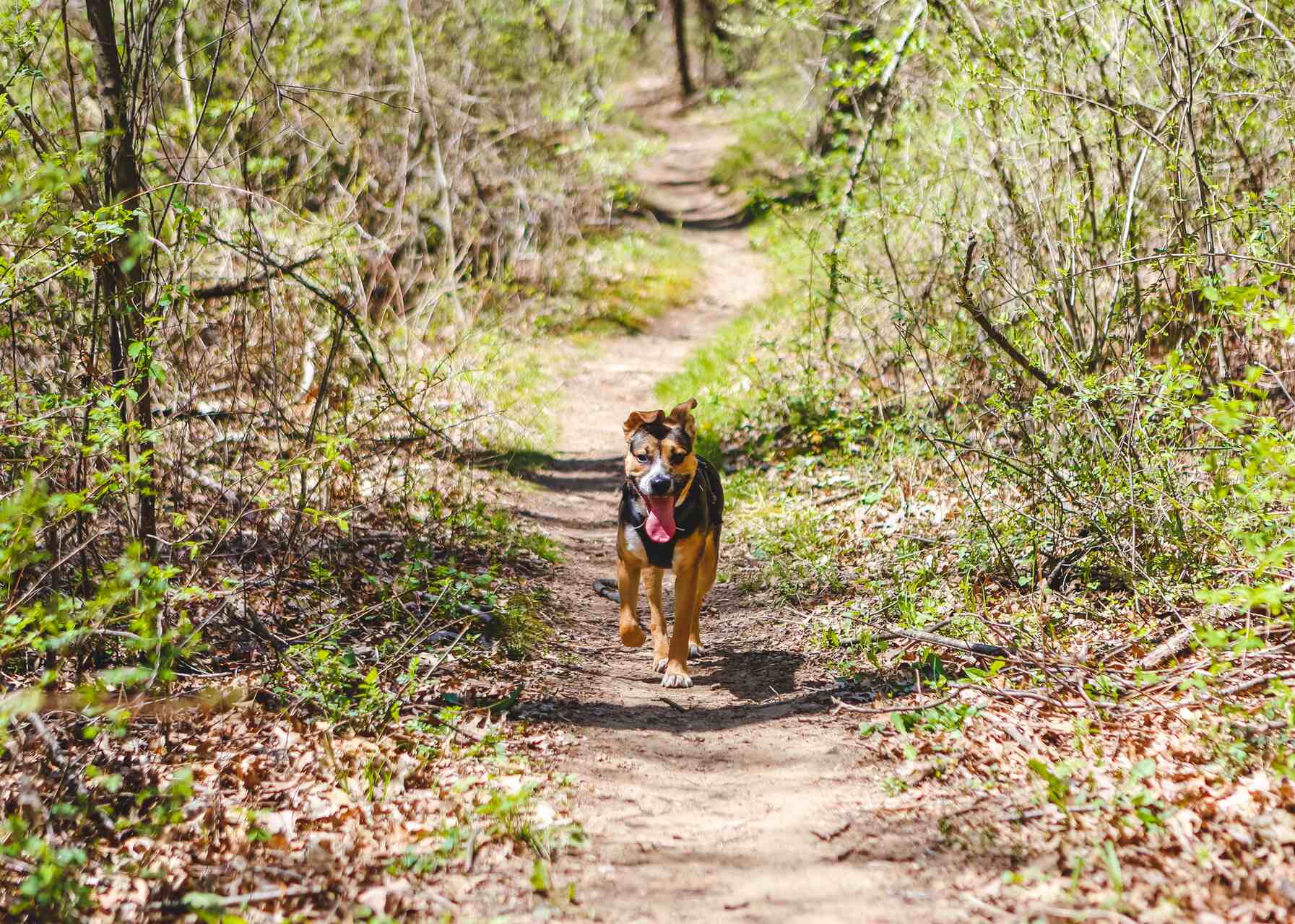
Most importantly, it helps to remember:
A dog first aid kit means you’re better prepared for any mishap
Whether it’s a minor cut, an insect bite, or even heat stroke – some basic dog first aid steps can better equip you to handle the situation until help arrives. In some cases, it might even save your buddy’s life.
Here are some that’ll come in handy – before you’re able to drop by your vet, at least:
Wound care
- If your dog has their share of cuts and scrapes, lukewarm water and a pet-safe antiseptic solution can help safely clear away any blood.
- Keep some antiseptic wipes at hand to help prevent infection.
- Ask your vet to prescribe you a pet-safe antibiotic solution as well.
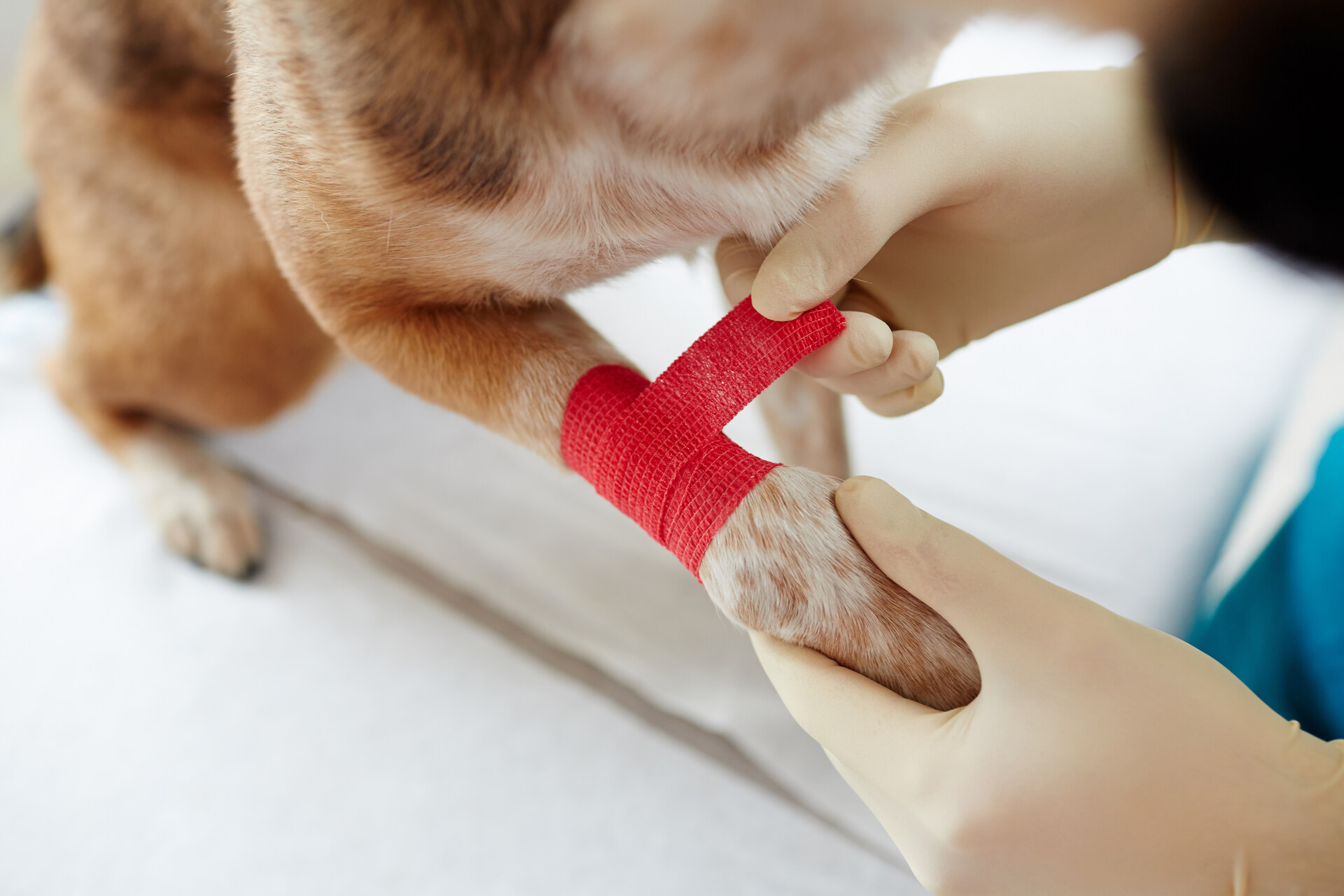
Bleeding
If you’re dealing with a bleeding wound, it can be life-threatening if not treated in time.
- Use a clean cloth to apply gentle pressure to any wounds to prevent further bleeding.
- Gauze pads and compressing dressing can help stop bleeding, which can be life-threatening if not treated in time.
- Don’t have bandages? Use a scarf, belt, or shirt instead.
- Cover the wound with clean gauze, a vet-approved antimicrobial cream, and a bandage. Make sure not to wrap it too tight.
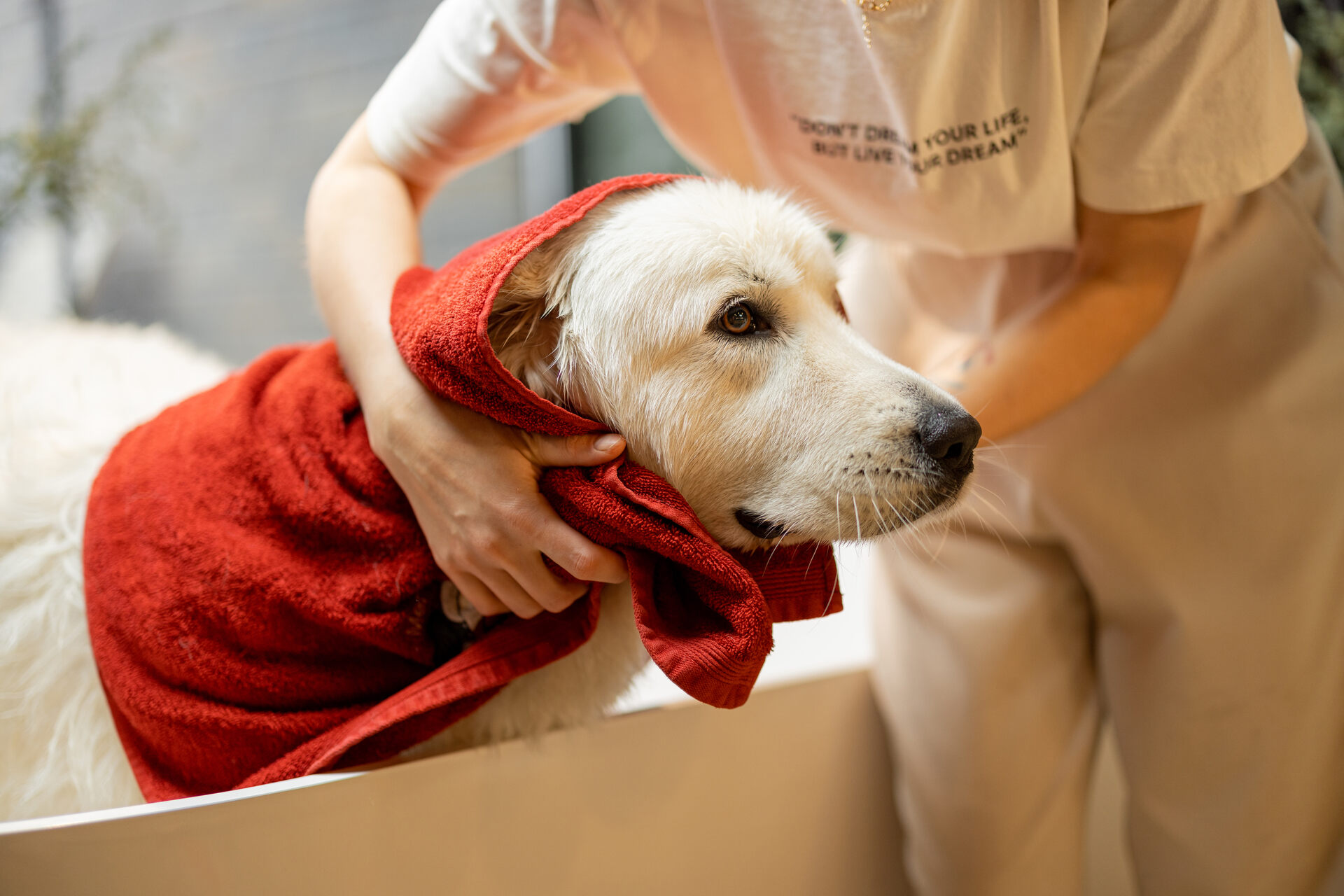
Heat stroke
With summer at our doorstep, your buddy might be at risk for heat stroke when it’s sunny outdoors.
- First, watch out for the telltale signs your buddy is overheating – including excessive panting, drooling, and even dehydration.
- Keep plenty of cool water at hand for your dog (and you) to drink. Else, sprinkle some on your dog to help them cool down.
- You could also keep some cloth and/or a towel and cold water around to rub down your dog’s limbs and provide them some relief.
- Do your best to limit your time in direct sunlight – both for you and your buddy.

⚠️ Heat stroke, much like bleeding, can be life-threatening if not addressed immediately. Make sure to get in touch with your vet as soon as possible.
Choking & poisoning
If your dog’s eaten something they shouldn’t have, here are a few ways to make them barf it back up:
- Vets recommend keeping a bit of activated charcoal handy. This can help absorb any toxins your dog’s ingested.1
- Work with your vet on learning how to safely administer a Heimlich maneuver to your dog. You do want to avoid injuring your buddy any further while they’re already in a pinch.
Some experts also recommend keeping a bottle of 3% hydrogen peroxide handy to help your dog throw up.2
- Just make sure to check it in at security and declare it to the airport authorities in case you’re traveling with your buddy for vacation.
- Also make sure to seek your vet’s advice on how much to use and how often to avoid any complications from giving too much.
Read more: Flying With Dogs: Our Top Tips For A Stress-Free Flight
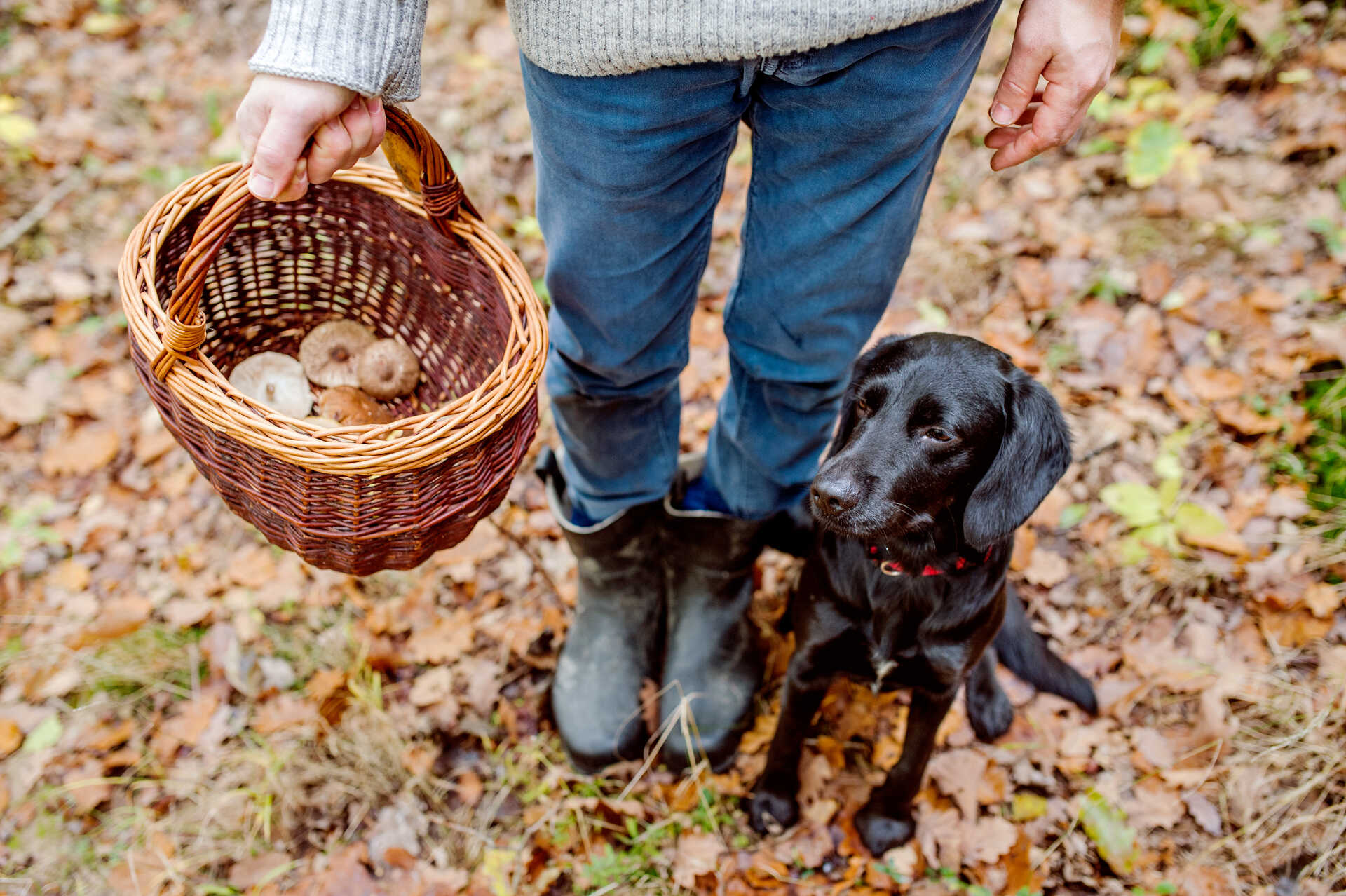
Now with all these tips on how to address a dog’s injuries – is there a way you can prevent these injuries in the first place?
We think so. Because at the end of the day…
All dogs have a chance of running away – at any second – outdoors
Yes, we know, your dog is the good-est boy or girl in the world. But even years of training can override their “runaway” instincts. (Especially when you two are together exploring the big, beautiful world around us.)
This is especially if you’ve got:
- A puppy that’s a ball of energy, untrained instincts, and zero impulse control
- An untrained dog
- A newly-adopted dog that doesn’t 100% trust you or know you yet
- A dog with anxiety and/or one that spooks easily due to loud noises (or just in general)
- A dog from a former hunting breed that has a high prey drive
- A dog from a former herding breed that just needs a “job” to keep them busy (like herding around the local deer population)
Read more: Why Do Dogs Run Away? 6 Reasons Behind It
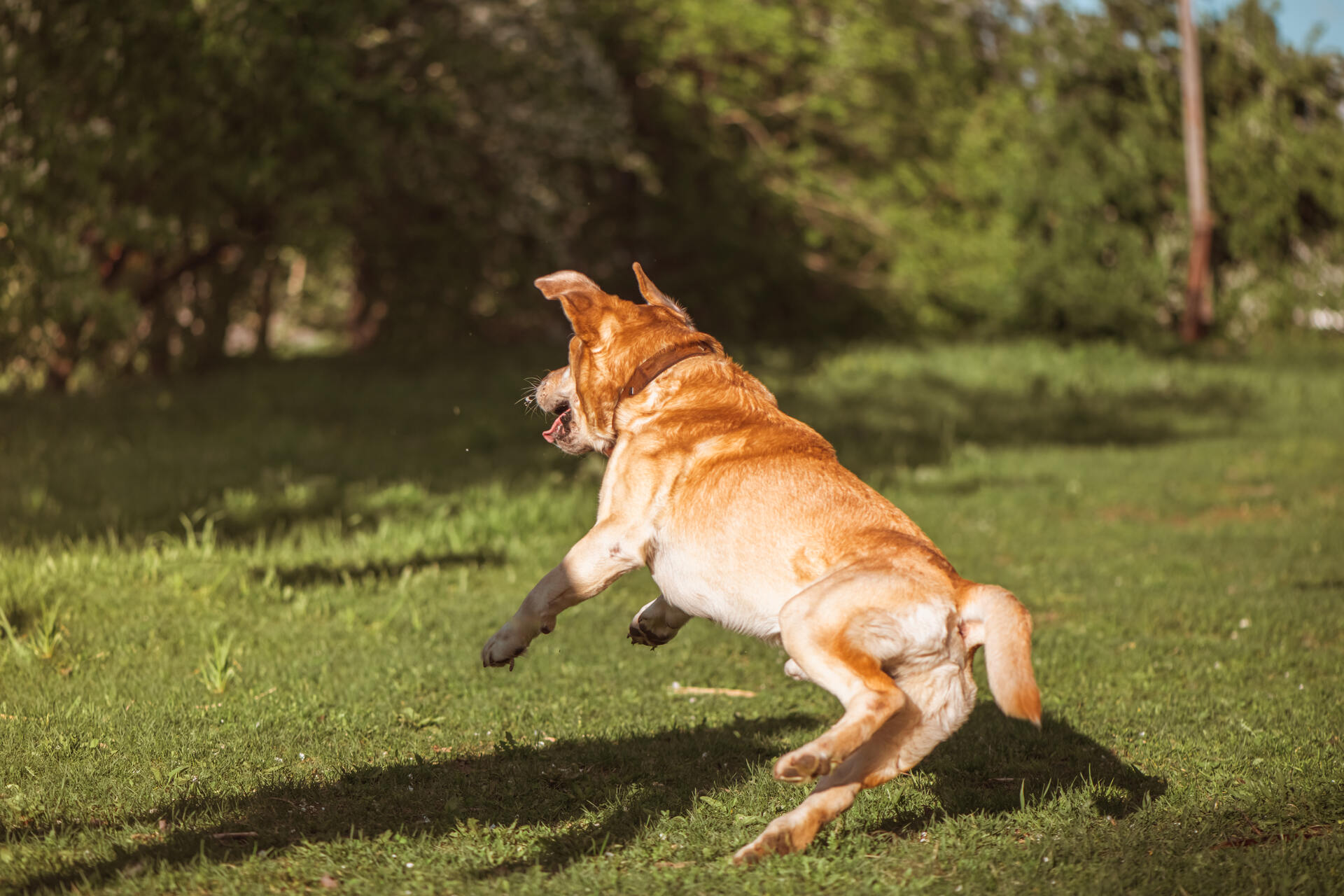
All of these factors can increase the chances your buddy might end up running off to explore some sight, sound, or smell – often too far away from you or safety.
Which can turn your adventure into a misadventure in a matter of seconds, since there’s always the risk they might run into some trouble if you’ve lost sight of them.
💡 It’s why outdoorsy dog parents around the world – just like you – are strapping GPS trackers to their buddies’ collars.
Because when it comes to a missing dog situation, every second counts.
So imagine the relief and peace of mind from knowing you can follow your dog’s every step – as they make their every step…and with just a glance at your phone?
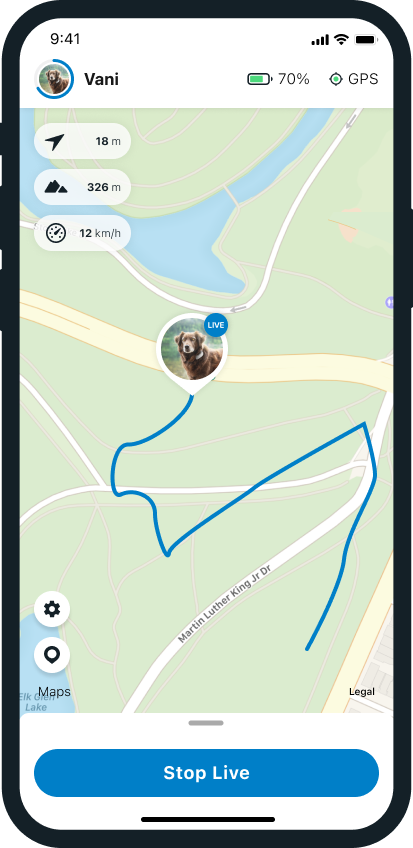
With your trusty Tractive GPS strapped to your buddy’s collar, you can now:
- Track your moving dog in real-time,
- Over an unlimited range,
- Across 175 countries (on a Premium subscription) – so even while on vacation
- Set up a “safe zone” and get an escape alert if your dog tries sneaking past it
- Log your dog’s favorite hangout spots over 24 hours (365 days on Premium) – so you know exactly where to look first if they’re missing
…and enjoy a ton of other features, built with love for pets – and for your next stress-free hike outdoors.
But hey, don’t take it from us. Here’s a real-life story where Lisa, a dog parent, lost sight of her dog while out on a hike together – but found him again in no time, with a little help from her Tractive device.

“I was walking Charlie (my Basenji) in a forest together, thinking it was just the two of us. I wasn’t aware my parents were actually hiking along in the same area – just out of sight.
Charlie, on the other hand, picked up their scent immediately – and he suddenly disappeared!
I was definitely panicking for a few minutes – but then I remembered to check the Tractive app on my phone. The LIVE tracking immediately showed me where he was, but I didn’t understand why he was headed that way.
But then I got a call from my mom – telling me that Charlie was walking with them. They didn’t know we were in the area either!
– Lisa van Roon, a Netherlands-based Tractive GPS dog parent
Read more: Lisa & Charlie the Basenji: Adventuring With Tractive
So wrapping up, let’s cover some of the essentials you need for your dog first aid kit – both to treat your dog’s injuries, plus prevent them from getting injured in the first place.
What to include in your dog first aid kit: The essentials
An extra leash or a harness can go a long way – but we do understand how nice it can be just letting your dog..well, be a dog and enjoy some off-leash time in the wilderness. (Though, of course, please make sure to check your local leash laws regarding public spaces.)
Which is where a well-stocked dog first aid kit means a stress-free adventure outdoors. And also why we’d recommend packing along some:
Items to take care of your dog’s injuries or infections
Including:
- Basic supplies like gauze pads, adhesive tape and bandages, scissors, a digital thermometer, and some cotton swabs.
- Any medications your vet might have prescribed for your dog, including anti-anxiety medication. Others like antiseptic wipes and creams, as well as some activated charcoal can also come in handy – but do make sure you get the green light from your vet first.
- Basic tools, like nail clippers, a flashlight, and something to remove pesky critters like ticks or fleas (like a pair of tweezers)
- Something to keep your hands clean, like disposable gloves in case you’re handling an open wound, and an alcohol-based solution to disinfect your hands.
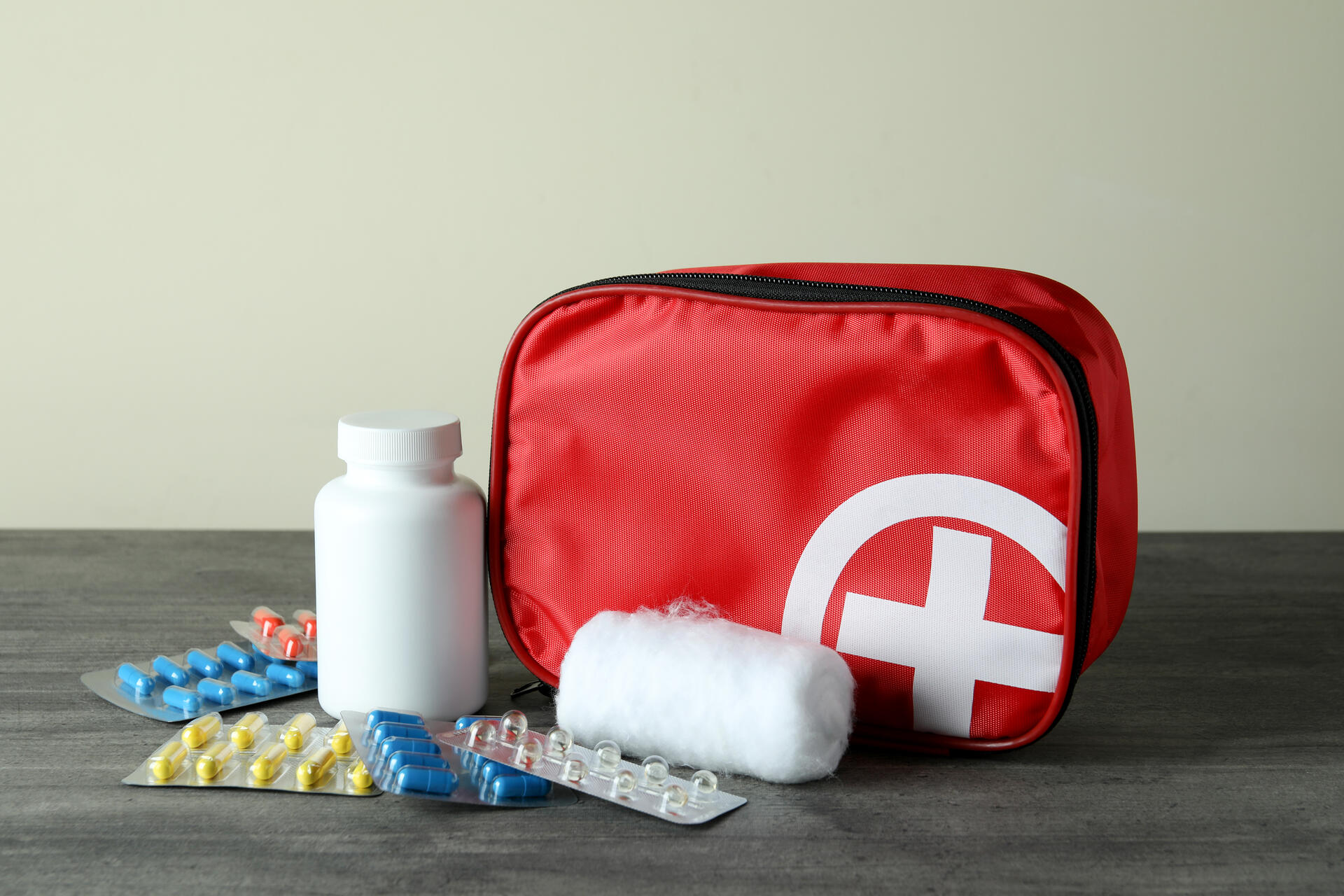
Emergency phone numbers
Including your vet’s contact information and a pet first aid manual, if you can get your hands on one. You’ll find it helpful keeping a printed copy at hand in case your phone battery gives up on you.
Some of your dog’s favorite toys
Once you’ve patched up your buddy, it’s possible they might still be a bit shaken by the experience. So keep some items around that can help comfort them in the aftermath. Including:
- Their favorite toys
- Something with your scent (like a sweater)
- Their favorite blanket
- A muzzle (to prevent them from licking any wounds)
Give your buddy plenty of cuddles and comfort if you can. They know they’ve messed up and providing them some comfort and security in this time can go a long way.
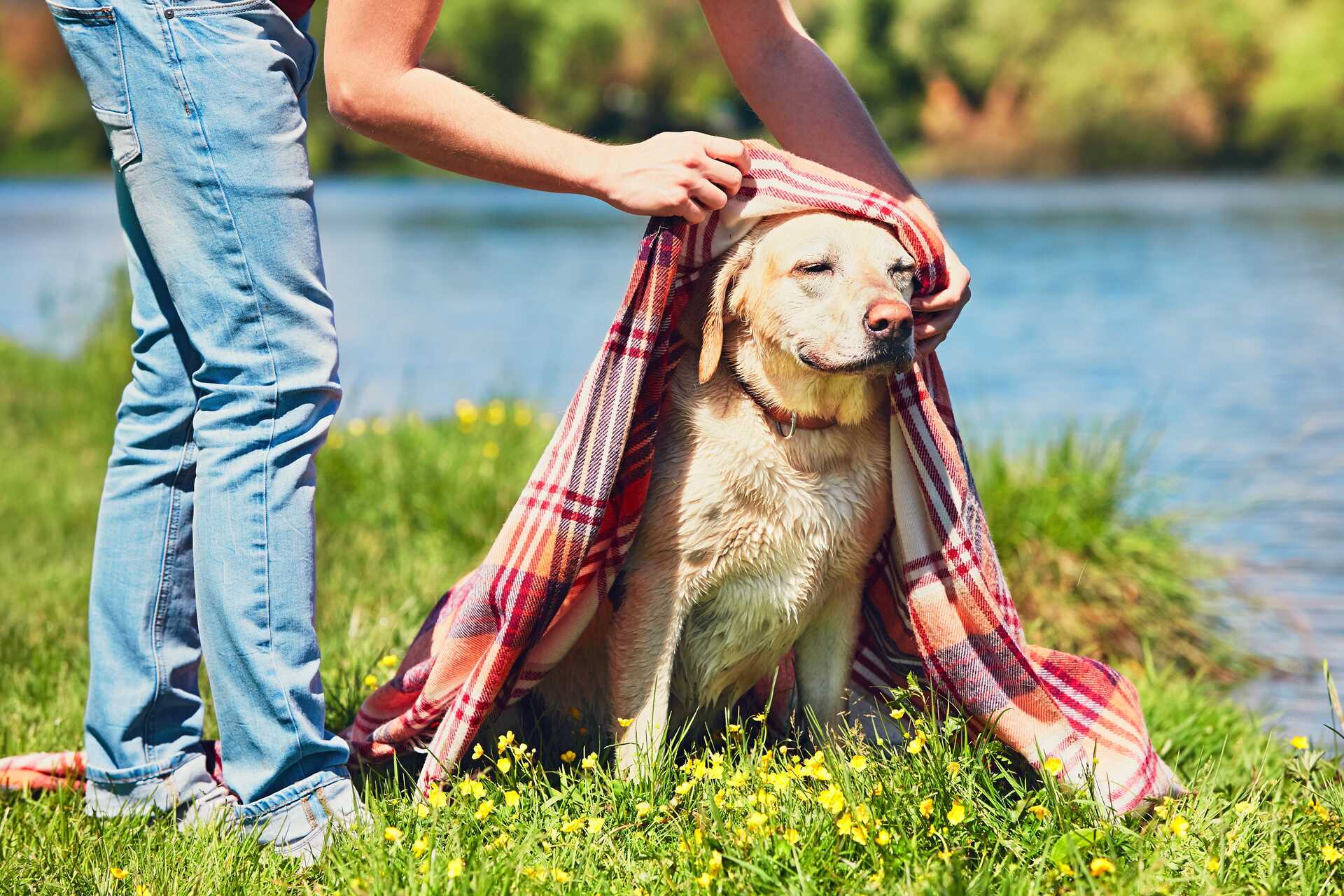
More tips to keep your dog safe outdoors
The better prepared you are for an emergency, the safer and more stress-free your trip is likely to be. But it’s not just enough to just carry along a dog first aid kit and expect it to work like magic.
Rather – for some extra security – we’d also recommend you:
Take a dog first aid course with the pros
Besides first aid for humans, taking a dog first aid course with your vet or a local professional organization (like the American Red Cross) goes a long way. These can teach you how to:
- Check your dog’s vital signs
- Calmly address emergencies with essential first aid care
- Administer CPR to your dog, if necessary
- Recognize the signs your dog might be choking
With these practical skills, you’ll be better-equipped to handle any emergency – without panicking or feeling helpless.
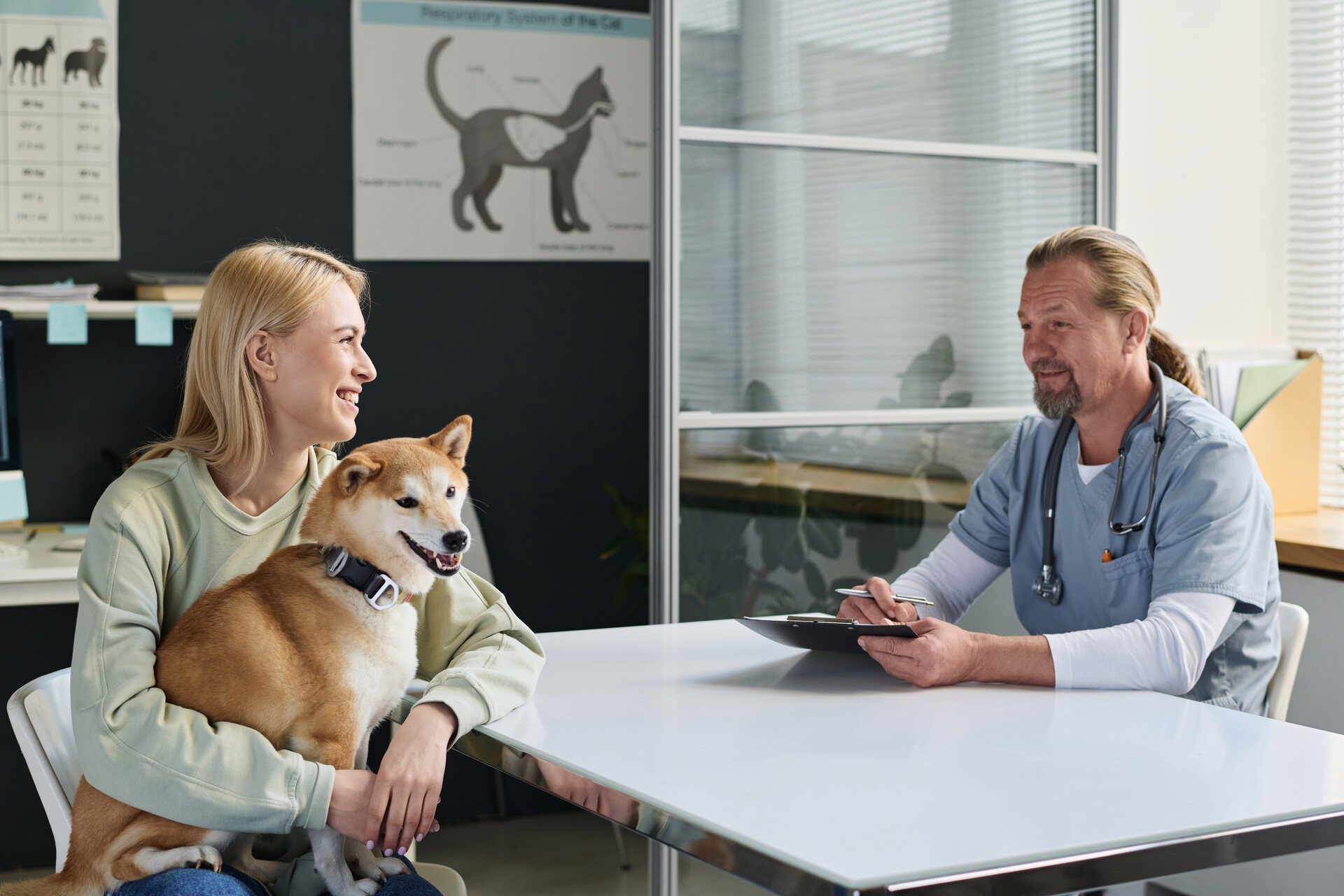
Many such organizations also offer a certification once you’ve completed their course, so these skills can come in handy across all situations.
The American Red Cross, for example, also includes an app you can use as a go-to emergency guide when you’re outdoors.
You can also do a dog first aid course online from the comfort of your couch – but we’d recommend trying and dropping by one in person, if you can. You’ll be able to work directly with the pros, get your questions answered that much quicker, and get hands-on experience that much better.
Be extra mindful of bites, lick, tastes & “treats”
Now you might want to be a good dog parent and let your dog share your hiking snacks or any outdoor nibbles – but when you’re not in a controlled environment (like home), it’s extra important you be mindful of anything your dog gets into their mouth.
Because as it turns out, practically anything your buddy might end up biting, licking, tasting, or even chowing down while outdoors could be potentially toxic to them. (Necessitating a trip to the emergency ward – and a hefty, thoroughly avoidable vet bill after.)
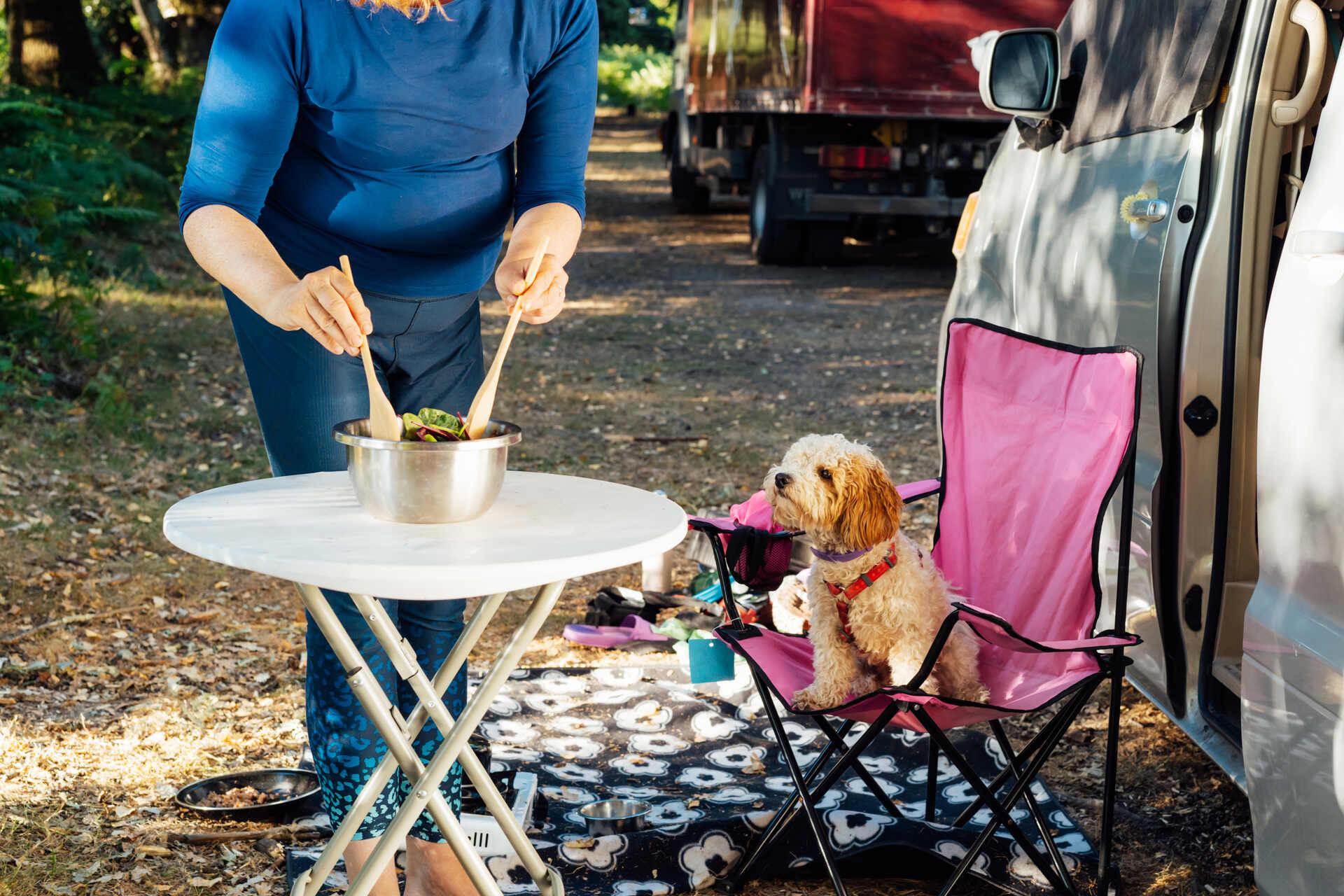
So make sure to:
- Stay informed on what foods are off-limits to dogs. Your hiking trail mix, for example, might include raisins or chocolate, both of which could be harmful to your buddy.
- Avoid areas with mushrooms and other potentially poisonous plants. Depending on the plant, even a lick of these might end up with your dog in hospital!
- Steer clear of areas that may have pesticide, since coming in contact with them may also poison your dog.
- Keep a firm leash on your dog if you see any food litter on the trails. Your fellow runners and hikers may not be as considerate as you, so be extra careful your buddy doesn’t get a bite of their leftovers instead.
Read more:
- The Fun(gi) Facts: Can Dogs Eat Mushrooms?
- What Can Dogs Not Eat? 15 Foods Poisonous To Dogs
- Toxic To Dogs: Dog Parents Beware Of These Common Dog Poisons
💡And if you’ve invested in a Tractive device, you’re in luck.
With the Danger Reports feature, you can mark a specific area as a “danger zone” on your Tractive app – containing mushrooms, toxic substances, or even poison bait.
Which both helps you steer clear of them – and do your part as a responsible dog parent by warning other, fellow dog parents nearby.
Make regular training a priority
While you can plan ahead for an emergency, regularly training your dog with basic commands like “Come,” “Drop it,” and “Stay” can be lifesavers as well.
Because while your dog’s instincts might still drive them to run off and explore, regular recall training (“Max! Come back!”) can help them return to you if you’ve reinforced this behavior enough.
Similarly, teaching your dog to “Drop it” can prevent them from taking a nibble out of something potentially harmful out in the woods, at a park, or anywhere you two wander around together. (Including your city’s local garbage heap.)
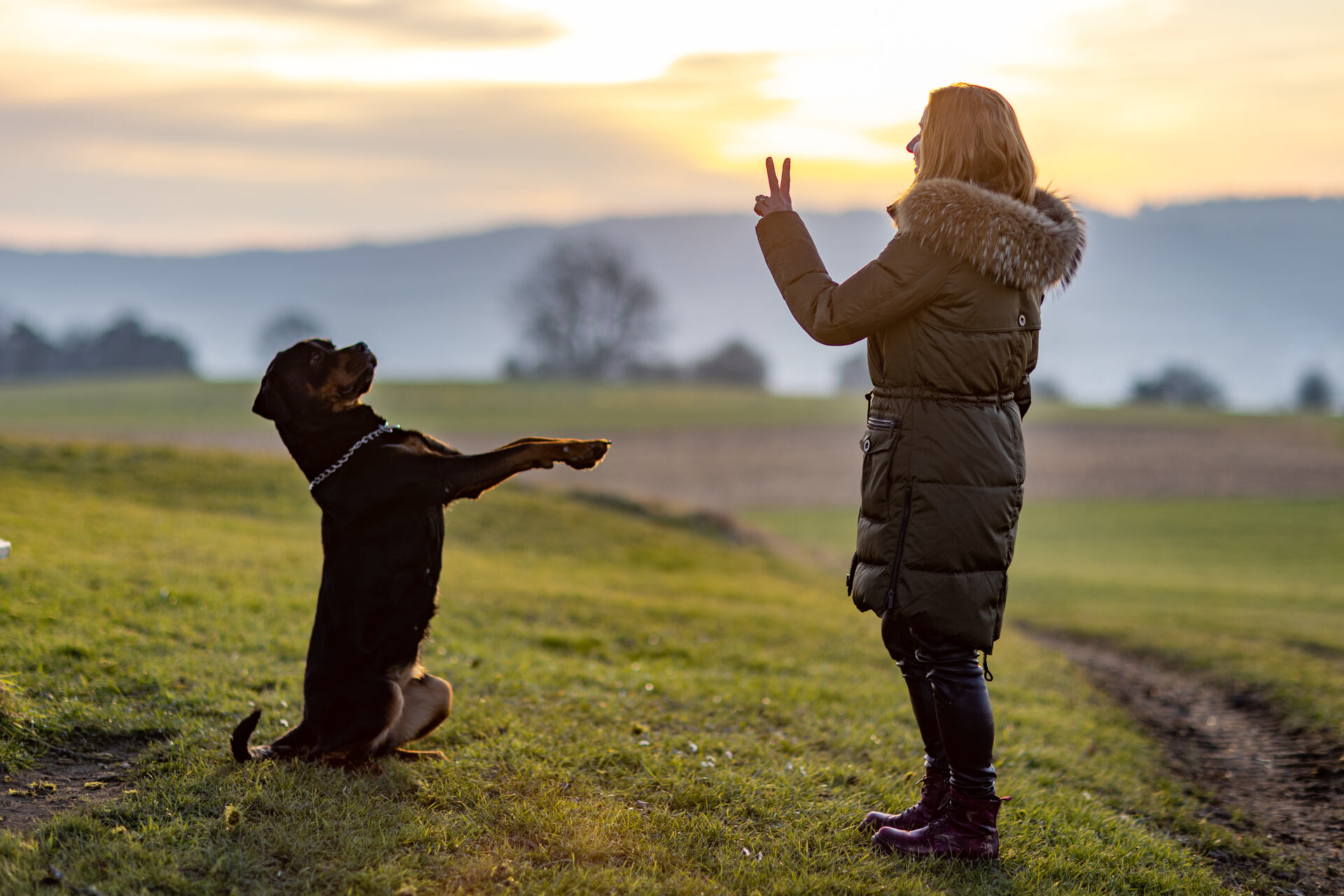
Refreshing your dog’s training for basic commands helps keep them mentally active as well – which goes a long way in terms of their overall health. (Especially if you combine it with teaching them new tricks and commands as well.)
All of which can help prevent your buddy from running away out of boredom.
Read more: Dog Recall: How To Teach Your Dog To Come When Called
Plan ahead for a lost dog situation
Besides tracking your dog in real-time, we’d also strongly recommend you get your dog their very own microchip. A microchip isn’t just a nice-to-have – it’s legally required in a number of US states and countries around the world. (Especially for dogs.)
How does it work? Well, a microchip works like a permanent ID tag for your dog.
- In under 10 minutes, a vet can quickly and painlessly implant it between your dog’s shoulder blades.
- Next, you can update your contact details on the microchip database.
- Now if someone finds your lost dog, they can take them to a vet or shelter – who can scan your dog for a microchip, find your contact details, and get in touch with you.
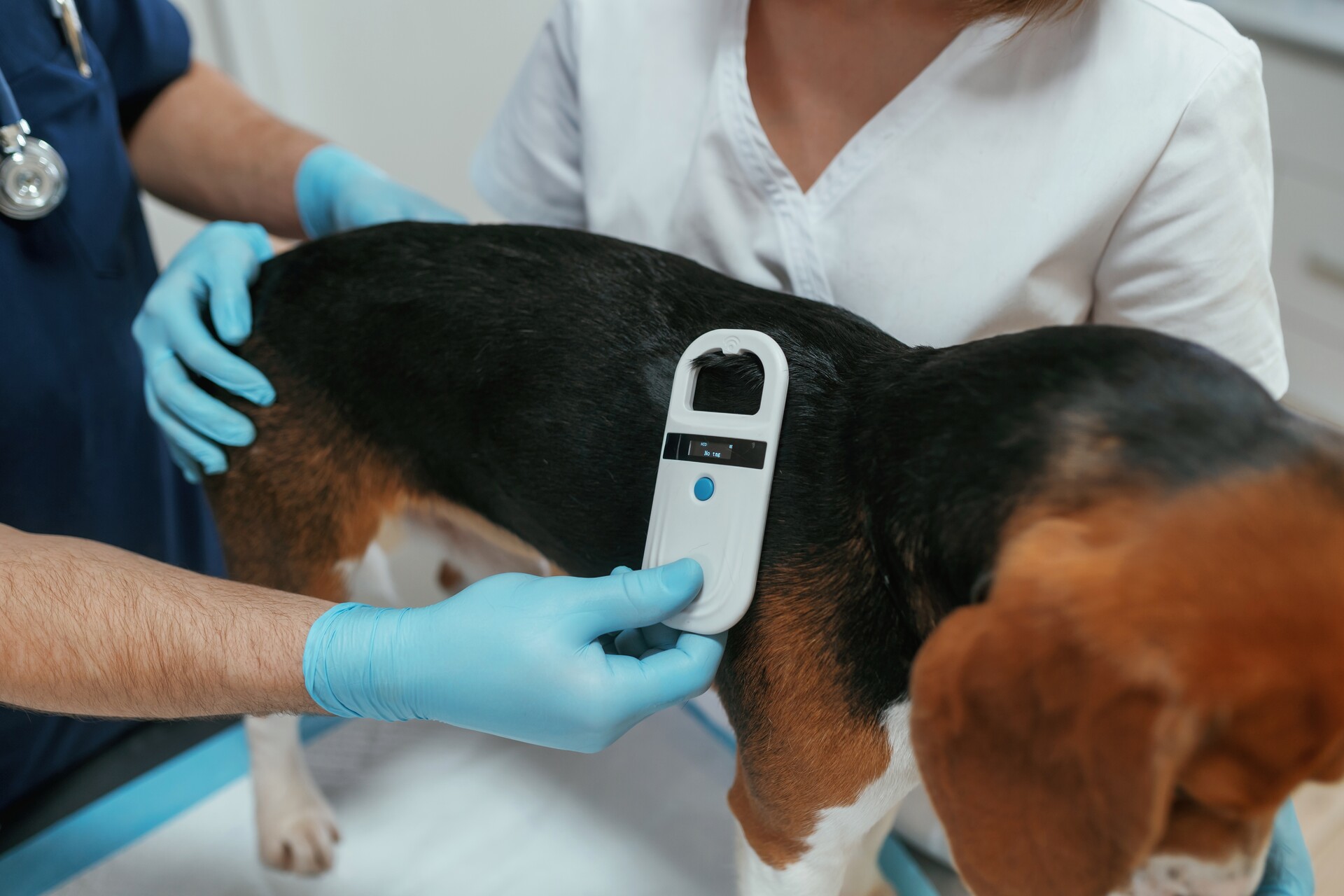
Since it’s implanted under your dog’s skin, a microchip isn’t likely to fall off or get dirty like a regular ID tag.
But we’d still recommend strapping an ID tag to your dog’s collar anyway – their microchip steps in case of an emergency, like if their ID tag falls off, gets lost, or smudged.
⚠️ Just remember: a microchip can’t help you track your dog in real-time – or actually, well, help you find your lost dog
Rather, microchips only function as identifiers – meaning someone has to actually:
- Take your lost dog to a vet or an animal shelter
- Scan their microchip
- …and actually get in touch with you to inform you they’ve found your missing buddy
Which – in a world where dognapping is on the rise – may not always be the case.
Especially if your dog is a rare breed, hasn’t been spayed/neutered, or has just come across a particularly determined pet thief. (Who’s got enough treats to entice them into entering a car and then driving off.)
Read more:
- Dognapping: Pet Kidnapping And How To Keep Your Dog Safe From Dog Thieves
- Dog Tracker Chip: What Are Dog Microchips vs GPS Trackers?
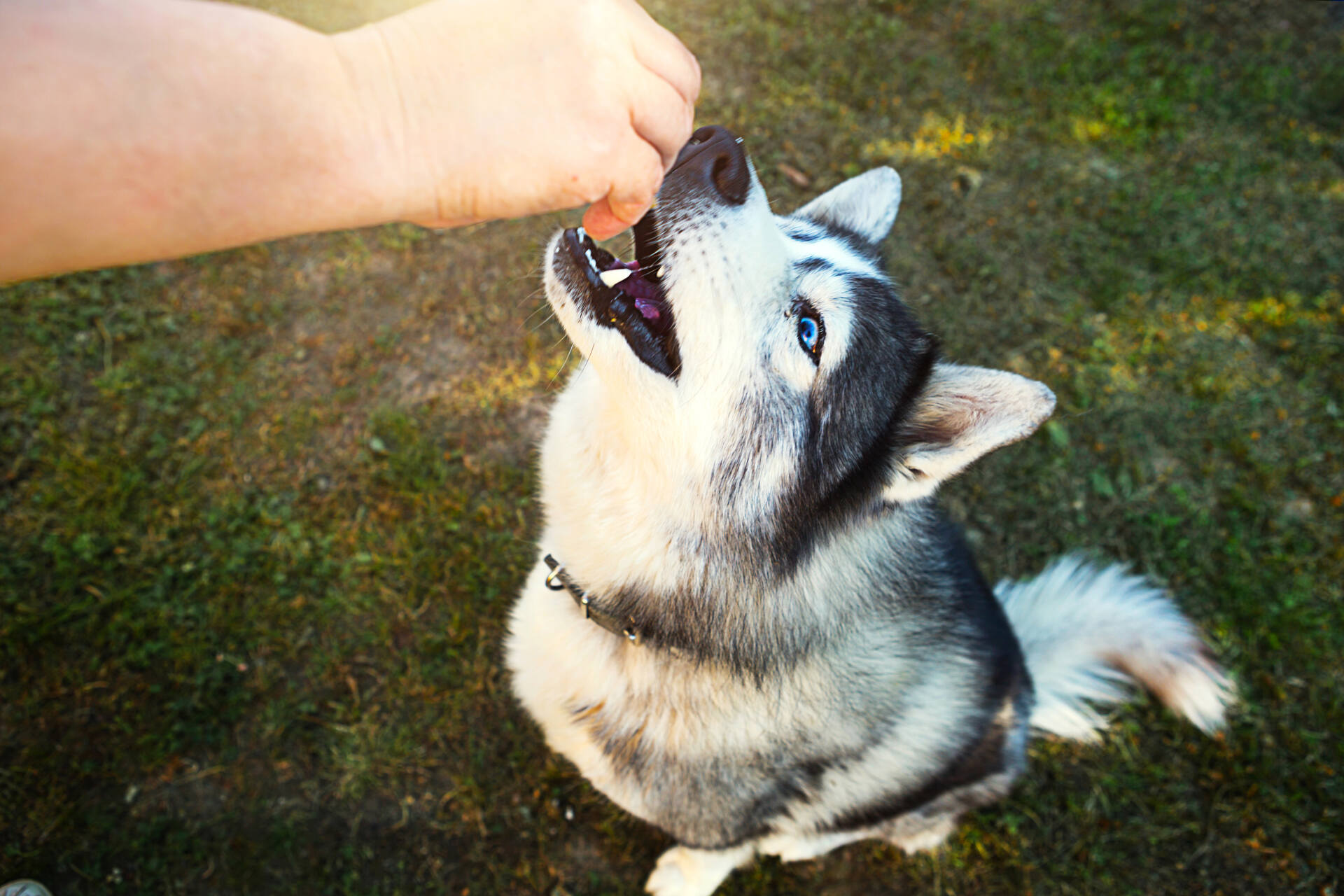
💡 But if you’ve invested in a Tractive device, you’re now equipped to actually deal with a case of pet theft – since you can track your missing dog in real-time.
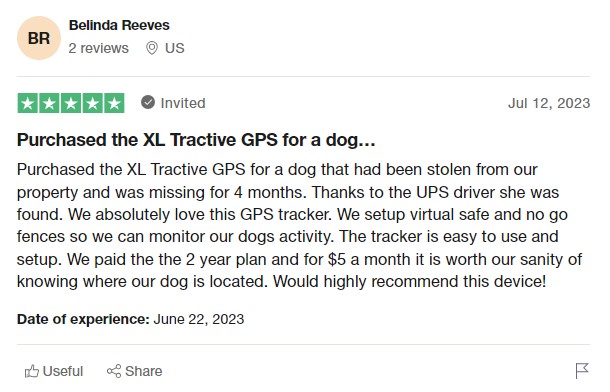
Never cut a hike short again – with a dog first aid kit at hand
You’ve packed all your gear, gotten your buddy ready – but with a dog first aid kit at hand, you’re that much more likely to have a safer, saner, stress-free outdoor adventure. Helping you deal with common mishaps that might occur with an active dog, including cuts and scrapes, heat stroke, and even choking and poisoning.
Here are a couple of items you’ll find helpful carrying along with you:
- Basic supplies to help you deal with wounds and bleeding, including gauze, antiseptic wipes, and ointment.
- Any vet-approved medications, including activated charcoal to help your dog with poisoning. Just make sure to use products only when advised to by your vet.
- Some basic tools to help you get rid of fleas, ticks, and mites – including tweezers and a flashlight.
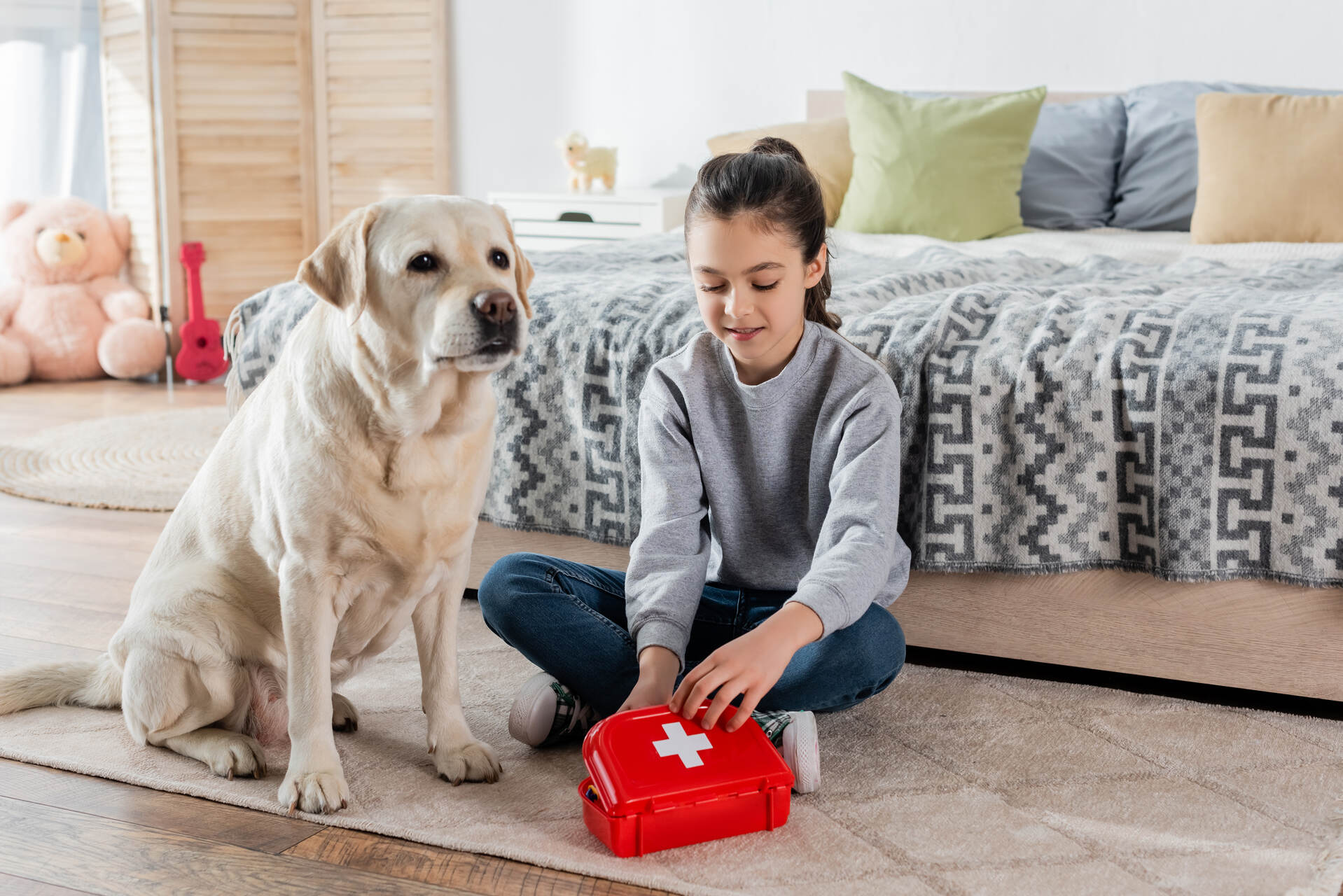
- Some of your dog’s favorite toys, or a blanket or sweater with your scent to help comfort them.
- An extra leash/harness and a muzzle.
- Plenty of water and cool cloths/towels for hot days.
- Your vet’s emergency contact details
- Dog-friendly snacks and treats that don’t include ingredients toxic to them
Besides packing these along, we’d also recommend you:
- Take a dog first aid course with your vet or a local organization, like the American Red Cross.
- Regularly revisit basic obedience commands with your dog – like “Come back,” and “Drop it.”
- Be extra mindful of what your dog eats outdoors.
- Get your dog microchipped to provide an extra layer of security.
💡And most importantly…
- Plan ahead for an emergency where your dog’s bolted off out of sight.
Which you can do with just a glance at your phone – if you’ve invested in a Tractive GPS tracker.
And with all the rough and tumble adventures you two get up to outdoors, the Tractive DOG XL Adventure Edition has you covered, with its:
- Bite proof, fiberglass-reinforced casing
- 30-day battery life
- 100% waterproof build
So you can hike, run, jog, cycle, or just explore the outdoors with your buddy – 100% stress-free.
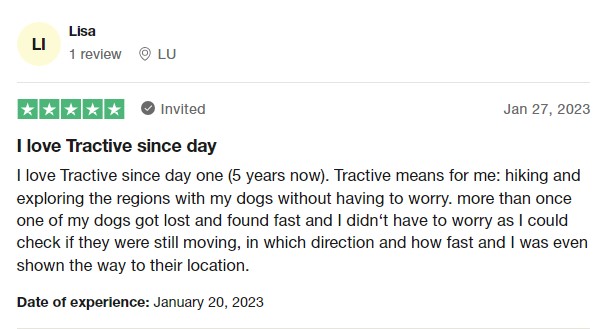
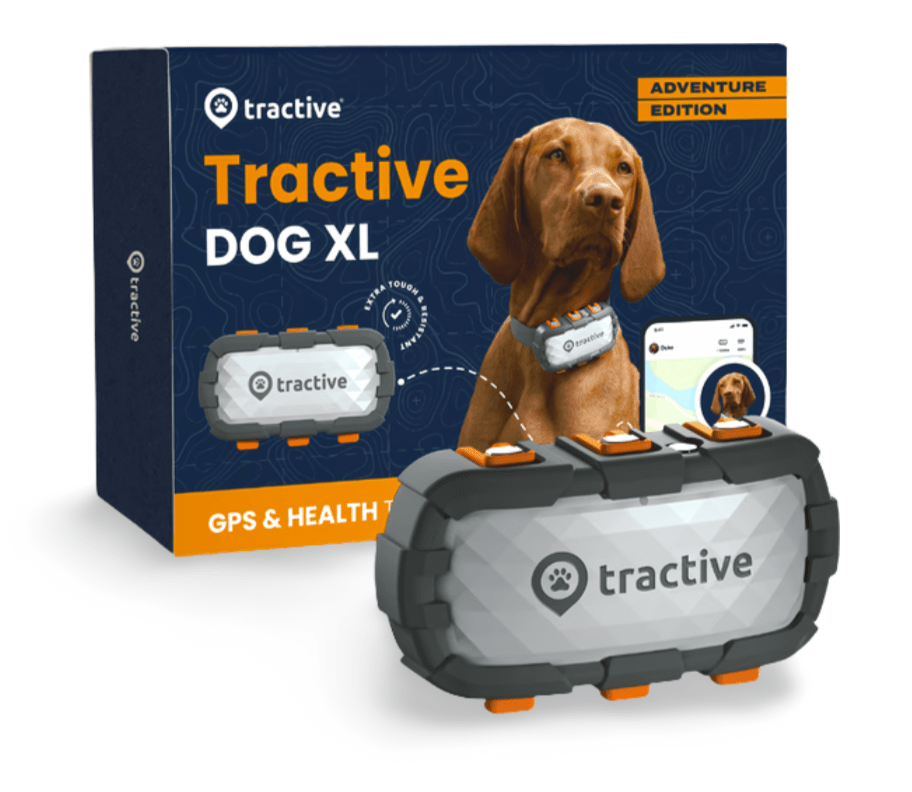
Always know where your dog is
Follow every step in real-time with unlimited range. Get alerts if they wander too far. Keep them happy & healthy with Wellness Monitoring. And let others – like walkers or sitters – keep an eye on your dog too.
Want to see the Tractive DOG XL Adventure edition in action? Here’s a short, sweet, sporty video to get you pumped!
And if you’ve liked this post, share it with a friend or a loved one – and let’s help build a safer, kinder world for our furry friends together.
Your furry friend’s health and wellbeing means as much as to us as it does to you. So we’ve made it a priority to only share medically-relevant content on our blog.
This post was checked, double-checked, and medically verified by Georgia-based vet, Dr. Dwight Alleyne.

Originally from Long Island, New York, Dr. Alleyne began his career at a no-kill animal shelter before becoming a licensed veterinary technician. He graduated from Cornell University Veterinary College in 2006 and completed an internship at Purdue University. Now practicing in Georgia, Dr. Alleyne specializes in soft tissue surgery and ultrasounds. He also writes pet health articles on his website, “The Animal Doctor Blog” (www.anmldrblog.com).



